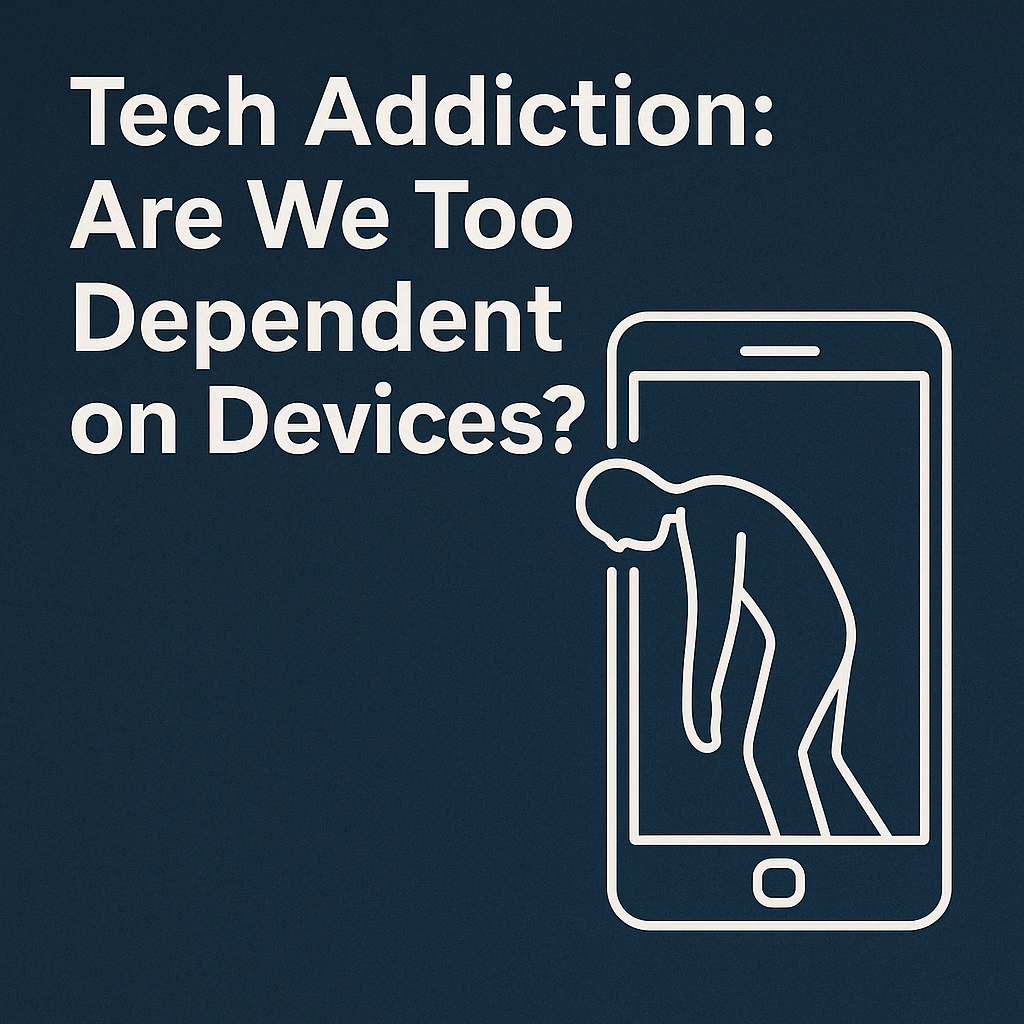Tech Addiction – In today’s hyper-connected world, technology has become the backbone of our daily lives. From the moment we wake up to the time we sleep, we’re surrounded by screens, smart devices, and an endless flow of digital information. But at what point does this convenience cross over into dependency—or worse, addiction?
What Is Tech Addiction?
Technology addiction refers to excessive use of digital devices—smartphones, tablets, computers, gaming consoles, and the internet—that interferes with daily life. It’s not just about how often we use technology, but how deeply it’s embedded in our routines and emotions.
Signs of tech addiction can include:
- Feeling anxious or irritable when away from devices.
- Spending more time online than intended.
- Neglecting personal relationships or responsibilities.
- Using devices as a way to escape from stress or boredom.
The Rise of Digital Dependency
Over the last decade, our screen time has skyrocketed. According to a recent study, the average adult spends over 7 hours a day on screens—including smartphones, TVs, and computers. For teenagers, that number is even higher.
The COVID-19 pandemic further accelerated our reliance on technology. Remote work, online classes, virtual hangouts, and streaming entertainment became the norm. While tech kept us connected, it also blurred the boundaries between work, rest, and social time.
Social Media and Dopamine Loops
Apps like Instagram, TikTok, and Facebook are designed to keep us hooked. Every like, comment, or notification triggers a release of dopamine—a “feel-good” brain chemical—encouraging us to keep scrolling. Over time, this reward cycle can lead to compulsive usage.
It’s not just teens; adults, too, fall into this loop. Checking emails late at night, mindlessly scrolling through feeds, or feeling FOMO (fear of missing out) are signs that technology might be controlling us more than we think.
The Mental and Physical Cost
While tech has many advantages, excessive use can take a toll on both mind and body:
- Mental Health: Increased screen time has been linked to anxiety, depression, and sleep disorders. Constant exposure to curated online lives can also lead to self-esteem issues.
- Physical Health: Staring at screens for long periods can lead to eye strain, poor posture, and a sedentary lifestyle, increasing risks for obesity and related conditions.
- Relationships: Face-to-face communication often takes a backseat. Families and friends may be physically present but emotionally distant, each lost in their own digital worlds.
Can We Break Free?
Tech is here to stay—and that’s not a bad thing. The key lies in balance and mindfulness. Here are some simple steps to regain control:
- Set Screen Time Limits: Use built-in tools on your phone to track and restrict usage.
- Digital Detox Days: Choose one day a week to unplug from all devices.
- Turn Off Notifications: Reduce the constant pinging and distractions.
- Prioritize Real-Life Interaction: Make time for in-person conversations and activities.
- Use Tech for Good: Shift from passive scrolling to productive use—learning, creating, or connecting meaningfully.
Conclusion: The Choice Is Ours
Technology is an incredible tool, but like any tool, it must be used wisely. Being aware of our digital habits is the first step toward healthier tech use. Ask yourself: Am I using this device, or is it using me?
Finding that balance can lead to a more mindful, connected, and fulfilling life—both online and offline.



